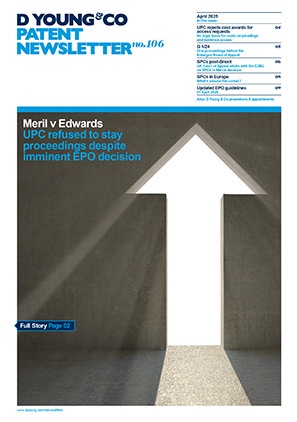Securing the future: cryptographic resilience to quantum threats
Quantum computers have the potential to be faster and more efficient for certain applications which can effectively utilise their unique properties such as superposition and entanglement. As the tip of the iceberg, generative artificial intelligence (AI) will experience faster training and performance, improved creativity, and efficiency limits will be surpassed. In cyber security, quantum key distribution will make eavesdropping detectable and avoidable, and post-quantum cryptography will provide unbreakable encryption. However, quantum computers could be leveraged to break conventional encryption protocols, endangering sensitive data.
Advantages and threats from quantum computing
Quantum computers use qubits, which can exist in a superposition of states and thus can represent more information than classical bits, which are either 0 or 1. This allows the quantum computer to evaluate multiple solutions simultaneously, which is not possible in classical computers. Additionally, qubits can become entangled, meaning the state of one qubit affects another, which enables faster information transfer. This means that, in theory, quantum computers will be much more efficient than classical computers at performing certain tasks, specifically those which involve the evaluation of multiple variables or solutions at once. To name a few, applications in materials science, drug discovery, financial modelling, AI and machine learning, are expected to leverage this to greatly improve efficiency and accuracy in these areas.
Alongside its advantages, quantum computing also brings unique threats to cyber security. Conventional encryption techniques rely on mathematical problems that are difficult to solve and would therefore take a classical computer billions of years to break. However, armed with quantum algorithms that effectively utilise the unique properties of quantum computers, these mathematical problems could be solved in a significantly shorter time (days, or even hours). Thus, quantum computing will jeopardize even the strongest conventional encryption techniques. For example, if implemented on appropriate quantum technology, Shor’s algorithm could be used to break commonly used public-key cryptography schemes such as RSA and EEC, and Grover’s algorithm could weaken symmetric encryption.
Current risk level and solutions
Practical quantum computers are years away from being widely available, facing a number of technical hurdles such as decoherence and error correction when trying to create quantum computers on a large enough scale (that is, with a sufficient number of qubits) to be practical. Opinion differs on timelines: IBM, Google, and Microsoft all aim to provide reliable quantum architecture within a handful of years, whereas Nvidia’s CEO has said useful quantum computers are probably 20 years away. In any case, organisations must prepare now for “harvest now, decrypt later” attacks in which encrypted data is harvested by attackers and stored indefinitely until technology sufficient to break the encryption becomes available.
To protect against quantum attacks, conventional encryption techniques must be replaced with new quantum-resistant algorithms. To this end, the USA National Institute of Standards and Technology (NIST) has proposed a post-quantum cryptography standard which includes a selection of quantum-resistant algorithms. Organisations are already migrating to quantum-resistant algorithms to protect sensitive information, such as Apple’s iMessage upgrade to PQ3.
Further, quantum key distribution provides a secure mechanism for key exchange. This technique relies on the physical properties inherent to quantum particles, such as photons, where measurements introduce errors. These errors can be identified, making third party intrusions detectable. The main approaches include prepare-and-measure protocols and entanglement-based protocols. This has already been implemented successfully for example using optical fibres, but remains an open area of development.
In conclusion, whilst the benefits of quantum computing will be extensive and paradigm-shifting, they remain to be practically implemented. On the other hand, we must address the security risks arising now. Solutions are already being developed, yet the field of post-quantum cryptography and security is relatively infant and poses exciting development opportunities.
Patentability
It is important to secure patent protection for your inventions. In view of the relative infancy of the field, quantum patents are particularly commercially valuable. Worldwide patent filings in the field of quantum computing are on the rise, reflecting the ongoing investment in quantum computing fields such as quantum hardware, error correction, and use of quantum computing in AI and machine learning applications. Depending on the particular invention, this sector presents some unique challenges for obtaining patent protection, such as the requirements of a technical effect to avoid patentability exclusions and sufficiency of disclosure hurdles.
For example, the European mathematical method and program for computer exclusions are relevant to post-quantum cryptography algorithms. At the EPO, only features of the invention which contribute to provide a technical effect beyond the exclusions can be considered for the purposes of assessing inventive step. Since post-quantum cryptography algorithms provide improved encryption techniques that are resistant to quantum attack, the use of such algorithms achieve a technical effect and may be patentable (provided novelty and inventive step requirements are met).
Patent applications relating to protocols for quantum key distribution will need to explain a physical implementation of that protocol to meet sufficiency requirements. As sufficiency is assessed at the priority date of the patent application, the implementation must be physically possible at the date of filing, and not rely on theoretical technologies that have not yet been realised.
Related articles
- Quantum technology: accelerating the push to net zero
- Quantum computing: international patent insights
- Quantum computing: a guide to obtaining patent protection at the EPO
Useful links
- NIST, “What Is Post-Quantum Cryptography?”: dycip.com/NIST-post-quantum-cryptography
- IBM Quantum Roadmap: dycip.com/ibm-quantum-roadmap
- Reuters, “Google says commercial quantum computing applications arriving within five years” dycip.com/reuters-google-quantum
- Microsoft, “Microsoft’s Majorana 1 chip carves new path for quantum computing”: dycip.com/microsoft-majorana1chip
- The Register, “Quantum? No solace: Nvidia CEO sinks QC stocks with '20 years off' forecast”: dycip.com/register-nvidia-20years
- NIST, “NIST Releases First 3 Finalized Post-Quantum Encryption Standards”: dycip.com/NIST-first3-quantum-standards
- Apple Security Research, “iMessage with PQ3: The new state of the art in quantum-secure messaging at scale”: dycip.com/apple-pq3-imessage


